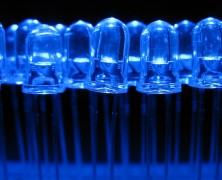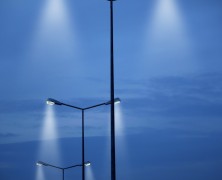This is just one of many fascinating questions being addressed at Rennselaer Polytechnic Institute’s Lighting Research Center. It’s one of a growing number of similar ongoing studies around the world that are exploring the links between lighting and human health. This latest study in particular focuses on how light affects the body’s circadian system, which governs sleep and wake phases. The LRC’s Mariana Figueiro recently discussed the project on NPR Radio. The generally held theory is that bright white light with a bluish tinge is more stimulating, mimicking daylight conditions. Warmer, golden-tinged light, on the other hand, is more calming and prepares us for bed. Working with a geriatric psychiatrist, the researchers used this theory in an attempt to help sleep-deprived Alzheimer’s patients at New York’s Albany County Nursing Home. They fitted a tabletop with a flat TV screen emitting bright bluish light, hoping to simulate the effects of prolonged daylight exposure. This produced positive results, as patients spending significant time at the table are now back to regular sleep patterns, with an accompanying improvement in mood and behavior. On balance, light therapy experiments such as these are showing great promise for all sorts of human health concerns. The results will only improve as we move toward improved lighting technology and increased understanding of how it affects the human...
London LED Street Lights...
posted by Flexfire LEDs
Joining major cities all across Europe, the United States and Asia, London has announced plans to upgrade 35,000 city streetlights with LED luminaires. It’s the first phase of a plan that will ultimately see 52,000 streetlights converted to LEDs over the next ten years, consistent with the city’s goal of a 60% reduction in carbon emissions by 2025. The plan was announced by the Transport for London (TfL) transit authority in conjunction with the mayor’s office, and represents the largest such investment in the city’s history. The first phase alone is expected to reduce emissions by 9,700 metric tons each year, while generating GBP1.85 million in savings for the TfL. Further savings are expected with the addition of a networked adaptive control system to this London LED street lighting installation, which will be programmed to control light levels according to traffic flow and overall road usage. The system will also automatically detect maintenance needs, saving money in both the short and long term....
New Lutron C.L Dimmers...
posted by Flexfire LEDs
Consumers now have an expanded set of lighting options thanks to new Lutron C.L dimmers. Lutron is an industry-leading manufacturer of high quality dimmers for all kinds of lighting systems, and these are designed to control bulbs and fixtures that employ either compact fluorescent, LED, or halogen lighting technologies. Lutron’s C.L dimmers are UL Listed, and provide full-range dimming for virtually any lighting application. After extensive testing, we are happy to report that the company’s Diva C.L, Skylark Contour C.L, and Maestro C.L dimmers are all fully compatible with LED strip lights from Flexfire...
LED Lighting Health Benefits...
posted by Flexfire LEDs
Earlier this month at the 2014 Consumer Electronics Show, the Rensselear Polytechnic Institute’s Smart Lighting Engineering Research Center demonstrated a personal light measurement system that will assist in accurately monitoring the body’s circadian rhythm. Designed for Google Glass, the prototype captures an individual’s light exposure and biometric signals, then sends this information to an Android app. The app then provides information that will help the individual achieve better sleep cycles, in turn leading to improved overall health and productivity. This project is the latest of many to explore LED lighting health benefits. So what do LED lights have to do with this? Among all light sources, LEDs are unique in that they can be tuned to control light direction, color temperature, and overall illuminance. LEDs thus play a key role in so-called “human-centric lighting”, which examines lighting exposure as a means to address modern health issues. This is particularly relevant given the ever-increasing amount of time we spend indoors, not to mention the fact that many in the Northern Hemisphere live with little to no sunlight each winter. Imagine this: you live in northern Sweden, where prolonged periods without daylight turn you into a depressed, grumpy, unproductive mess. Along comes a device that measures your personal light intake each day, then automatically tells your home lighting system how much and what sort of light your body needs to function properly. Sounds like science fiction, right? Check out RPI’s Healthy Home Project in Sweden. According to a report published in part by LightingEurope, the use of human-centric lighting helps improve sleep, increase productivity, accelerate healing and even prevent some chronic diseases. LEDs promise to play a central part in this exciting new field of research, and it will be interesting to see where this takes us...









